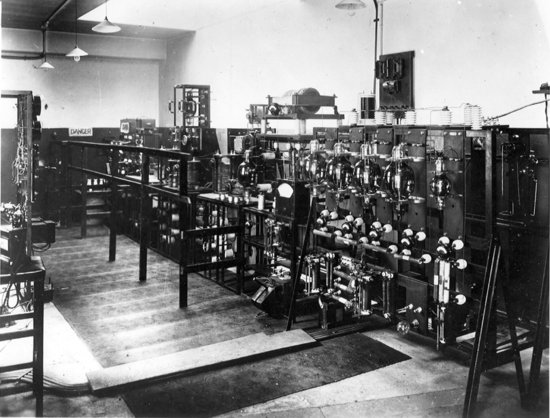15
Terrestrial Broadcast/Cellular Network Integration
15.1 Broadcasting in Historical Context
In 1923, Captain PP Eckersley,1 the BBCs first chief engineer launched a new era in broadcasting at Daventry in the Midlands. The first years of radio had individual stations transmitting programmes to individual cities across the country, from London to Glasgow.
The BBC transmissions in London for example were initially from Marconi House in the Strand, using a transmitter located in an attic room with aerials strung between towers on the roof adjacent to Bush House, home of the BBCs World Service. The transmission call sign was 2LO named after the transmitter illustrated in Figure 15.1.
Figure 15.1 2LO transmitter.2 Reproduced with permission of the Science Museum. From 2015 onwards the 2LO transmitter will be on display in the new Making of Modern Communications Gallery at the Science Museum in Kensington.

Eckersley decided to have total coverage of the UK from one powerful transmitter located in the centre of the country. The site chosen had an ancient anglo saxon oak supposed to mark the exact centre of England, the Daven Tree, hence Daventry. The site was bought in 1924 and in July 1925 the world's first high-power low-frequency broadcasting transmitter was installed, known as Daventry 5XX and nicknamed the ‘old gentleman’ by its team of engineers. The 26-kW transmitter was the ...

